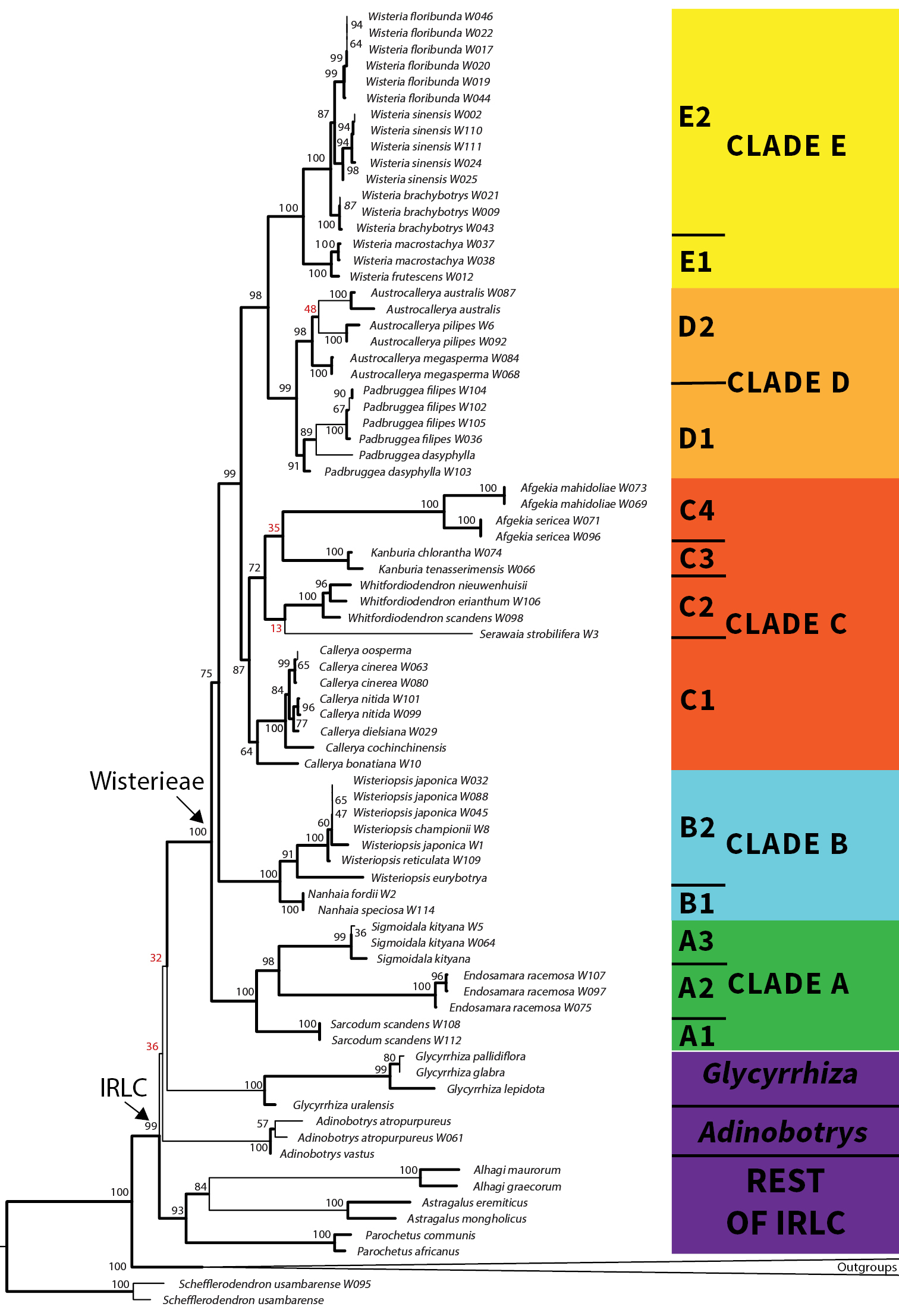
|
||
|
Combined Maximum Liklihood (ML) and Bayesian Inference (BI) Phylogenetic tree of Tribe Wisterieae. The tree is derived from the combined plastid and ITS, RAxML bipartitions analysis representing 77 (36) ingroup samples (taxa) and 59 (40) outgroup samples (taxa). The outgroup Schefflerodendron is used to root the trees. Lines in bold on the phylogeny incorporate results from the combined Bayesian Inference analysis, demarcating clades with BPP (0.95) support and above. Nodes are marked up with bootstrap values as percentages derived from the combined ML analysis with values of 50% or less marked in red. The collapsed portion of the tree, below the IRLC and above Schefflerodendron, represents the following genera (see Suppl. material 1: Figs S1–S6): Tribe Robinieae (Coursetia, Gliricidia, Poissonia & Poitea); Tribe Sesbanieae (Sesbania), Tribe Loteae (Coronilla, Lotus & Securigera); Tribe Millettieae (Millettia), Tribe Abreae (Abrus); Tribe Phaseoleae (Clitoria & Ophrestia); Tribe Indigofereae (Phylloxylon) and basal millettioids (Austrosteenisia, Disynstemon, Xeroderris & Platycyamus). Tribe Wisterieae is treated within five clades (Clades A–E), colour coded green for Clade A (Sarcodum, Endosamara & Sigmoidala); cyan for Clade B (Nanhaia & Wisteriopsis), red for Clade C (Callerya, Serawaia, Whitfordiodendron, Kanburia & Afgekia); orange for Clade D (Padbruggea & Austrocallerya) and yellow for Clade E (Wisteria). Each clade is further subdivided to represent the genera (except for the single accession of Serawaia which is incorporated with Whitfordiodendron in Clade C2) and E1 and E2 represent the geographical disjunction of species in Wisteria. Outgroups within the IRLC in purple include Glycyrrhiza, Adinobotrys and representatives of the Temperate Tribe block. The ingroup (IRLC) and Tribe Wisterieae are demarcated with arrows on the tree. |